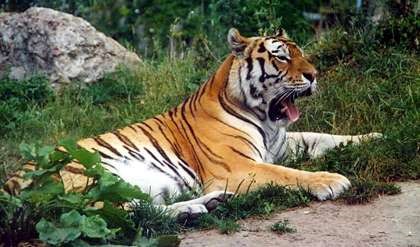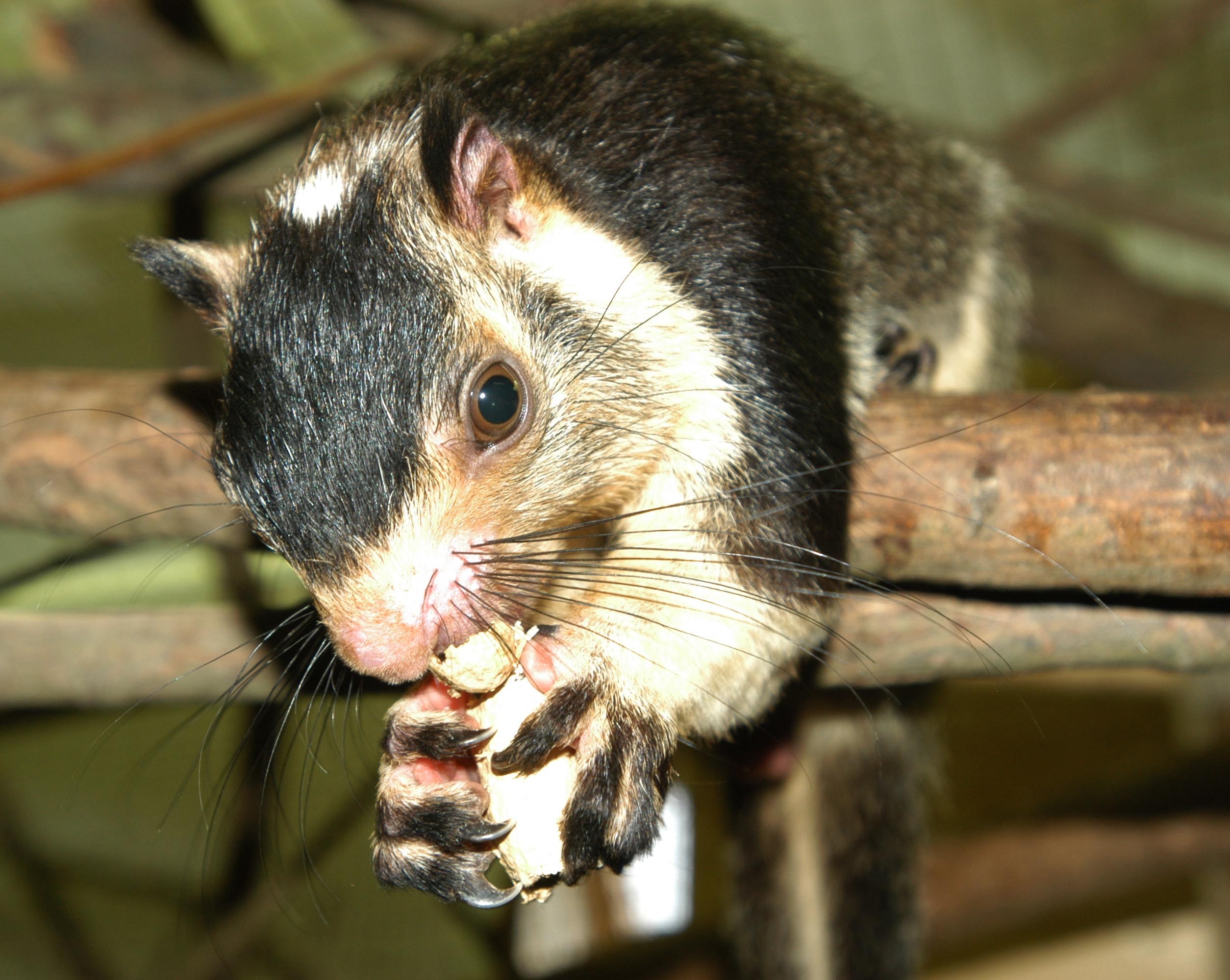|
Oriental Giant Squirrels
Oriental giant squirrels are cat-sized tree squirrels from the genus ''Ratufa'' in the subfamily Ratufinae. They are a distinctive element of the fauna of south and southeast Asia. Species There are four living species of oriental giant squirrels: In prehistoric times this lineage was more widespread. For example, animals very similar to ''Ratufa'' and possibly belonging to this genus, at least belonging to the Ratufinae, were part of the early Langhian (Middle Miocene, some 16–15.2 million years ago) Hambach fauna of Germany Germany, officially the Federal Republic of Germany, is a country in Central Europe. It lies between the Baltic Sea and the North Sea to the north and the Alps to the south. Its sixteen States of Germany, constituent states have a total popu .... References Mammals of Asia * Langhian first appearances Extant Miocene first appearances Taxa named by John Edward Gray {{Squirrel-stub ... [...More Info...] [...Related Items...] OR: [Wikipedia] [Google] [Baidu] |
Miocene
The Miocene ( ) is the first epoch (geology), geological epoch of the Neogene Period and extends from about (Ma). The Miocene was named by Scottish geologist Charles Lyell; the name comes from the Greek words (', "less") and (', "new") and means "less recent" because it has 18% fewer modern marine invertebrates than the Pliocene has. The Miocene followed the Oligocene and preceded the Pliocene. As Earth went from the Oligocene through the Miocene and into the Pliocene, the climate slowly cooled towards a series of ice ages. The Miocene boundaries are not marked by distinct global events but by regionally defined transitions from the warmer Oligocene to the cooler Pliocene Epoch. During the Early Miocene, Afro-Arabia collided with Eurasia, severing the connection between the Mediterranean and Indian Oceans, and allowing the interchange of fauna between Eurasia and Africa, including the dispersal of proboscideans and Ape, hominoids into Eurasia. During the late Miocene, the conn ... [...More Info...] [...Related Items...] OR: [Wikipedia] [Google] [Baidu] |
Cream-coloured Giant Squirrel
The cream-coloured giant squirrel or pale giant squirrel (''Ratufa affinis'') is a large tree squirrel in the genus '' Ratufa'' found in forests in the Thai-Malay Peninsula, Sumatra (Indonesia), Borneo (Brunei, Indonesia and Malaysia) and nearby small islands. The species is near threatened and vulnerable to habitat degradation, and it has probably been extirpated in Singapore where the last sighting was in 1995. Reported sightings in Vietnam in 1984 are considered to be dubious. Description The cream-coloured giant squirrel is one of the largest squirrels. It has a head–and–body length of , a tail length of and weighs . On average, adults of both sexes have a head–and–body length of about and tail length of , while females weight about and males . As suggested by its name, the cream-coloured giant squirrel is typically overall cream to very light orangish-brown, while the underparts are whitish-cream. In Borneo and nearby small islands where it is the only ''Ratufa'' ... [...More Info...] [...Related Items...] OR: [Wikipedia] [Google] [Baidu] |
Mammals Of Asia
The animals living in Asia and its surrounding seas and islands are considered the fauna of Asia. Since there is no natural biogeographic boundary in the west between Europe and Asia, the term "fauna of Asia" is somewhat elusive but it is a geographical name given. Temperate Asia is the eastern part of the Palearctic realm (which in turn is part of the Holarctic), and its south-eastern part belongs to the Indomalayan realm (previously called the ''Oriental region''). Asia shows a notable diversity of habitats, with significant variations in rainfall, altitude, topography, temperature and geological history, which is reflected in its richness and diversity of animal life. Origins of Asian wildlife The formation of the Asian fauna began in the Mesozoic with the splitting of Laurasian supercontinent. Asia blends elements from both ancient supercontinents of Laurasia and Gondwana. Gondwanian elements were introduced from Africa and by India, which detached from the Gondwana land whi ... [...More Info...] [...Related Items...] OR: [Wikipedia] [Google] [Baidu] |
Palaeontology (journal)
''Palaeontology'' is one of the two scientific journals of the Palaeontological Association (the other being '' Papers in Palaeontology''). It was established in 1957 and is published on behalf of the Association by Wiley-Blackwell. The editor-in-chief is Dr Paul Taylor (Natural History Museum, London). ''Palaeontology'' publishes articles on a range of palaeontological topics, including taphonomy, functional morphology, systematics, palaeo-environmental reconstruction and biostratigraphy. According to the ''Journal Citation Reports'', the journal has a 2021 impact factor The impact factor (IF) or journal impact factor (JIF) of an academic journal is a type of journal ranking. Journals with higher impact factor values are considered more prestigious or important within their field. The Impact Factor of a journa ... of 3.547, ranking it 3rd out of 54 journals in the category "Paleontology". References External links * Paleontology journals Academic journals establi ... [...More Info...] [...Related Items...] OR: [Wikipedia] [Google] [Baidu] |
Germany
Germany, officially the Federal Republic of Germany, is a country in Central Europe. It lies between the Baltic Sea and the North Sea to the north and the Alps to the south. Its sixteen States of Germany, constituent states have a total population of over 84 million in an area of , making it the most populous member state of the European Union. It borders Denmark to the north, Poland and the Czech Republic to the east, Austria and Switzerland to the south, and France, Luxembourg, Belgium, and the Netherlands to the west. The Capital of Germany, nation's capital and List of cities in Germany by population, most populous city is Berlin and its main financial centre is Frankfurt; the largest urban area is the Ruhr. Settlement in the territory of modern Germany began in the Lower Paleolithic, with various tribes inhabiting it from the Neolithic onward, chiefly the Celts. Various Germanic peoples, Germanic tribes have inhabited the northern parts of modern Germany since classical ... [...More Info...] [...Related Items...] OR: [Wikipedia] [Google] [Baidu] |
Million Years Ago
Million years ago, abbreviated as Mya, Myr (megayear) or Ma (megaannum), is a unit of time equal to (i.e. years), or approximately 31.6 teraseconds. Usage Myr is in common use in fields such as Earth science and cosmology. Myr is also used with Mya or Ma. Together they make a reference system, one to a quantity, the other to a particular point in a year numbering system that is ''time before the present''. Myr is deprecated in geology, but in astronomy ''Myr'' is standard. Where "myr" ''is'' seen in geology, it is usually "Myr" (a unit of mega-years). In astronomy, it is usually "Myr" (Million years). Debate In geology, a debate remains open concerning the use of ''Myr'' (duration) plus ''Mya'' (million years ago) versus using only the term ''Ma''. In either case, the term '' Ma'' is used in geology literature conforming to ISO 31-1 (now ISO 80000-3) and NIST 811 recommended practices. Traditional style geology literature is written: The "ago" is implied, so that any s ... [...More Info...] [...Related Items...] OR: [Wikipedia] [Google] [Baidu] |
Middle Miocene
The Middle Miocene is a sub-epoch of the Miocene epoch (geology), epoch made up of two Stage (stratigraphy), stages: the Langhian and Serravallian stages. The Middle Miocene is preceded by the Early Miocene. The sub-epoch lasted from 15.97 ± 0.05 Ma (million years ago) to 11.608 ± 0.005 Ma. During this period, a sharp drop in global temperatures took place. This event is known as the Middle Miocene disruption, Middle Miocene Climatic Transition. For the purpose of establishing European land mammal ages, this sub-epoch is equivalent to the Astaracian age. References External links GeoWhen Database - Middle Miocene Miocene, .02 Miocene geochronology, 02 Langhian, * Serravallian, * {{geochronology-stub ... [...More Info...] [...Related Items...] OR: [Wikipedia] [Google] [Baidu] |
Langhian
The Langhian is, in the ICS geologic timescale, an age or stage in the middle Miocene Epoch/Series. It spans the time between 15.97 ± 0.05 Ma and 13.65 ± 0.05 Ma (million years ago) during the Middle Miocene.GeoWhen (2007) The Langhian was a continuing warming period defined by Lorenzo Pareto in 1865, it was originally established in the Langhe area north of Ceva in northern Italy, hence the name. The Langhian is preceded by the Burdigalian and followed by the Serravallian Stage. Stratigraphic definition The base of the Langhian is defined by the first appearance of foraminifer species ''Praeorbulina glomerosa'' and is also coeval with the top of magnetic chronozone C5Cn.1n. A GSSP for the Langhian Stage was not yet established in 2009. The top of the Langhian Stage (the base of the Serravallian Stage) is at the first occurrence of fossils of the nanoplankton species ''Sphenolithus heteromorphus'' and is located in magnetic chronozone C5ABr. The Langhian is coeval w ... [...More Info...] [...Related Items...] OR: [Wikipedia] [Google] [Baidu] |
Grizzled Giant Squirrel
The grizzled giant squirrel (''Ratufa macroura'') is a large tree squirrel in the genus '' Ratufa'' found in the highlands of the Central and Uva provinces of Sri Lanka, and in patches of riparian forest along the Kaveri River and in the hill forests of Karnataka, Tamil Nadu and Kerala states of southern India. The International Union for Conservation of Nature (IUCN) lists the species as near threatened due to habitat loss and hunting. Etymology and common names Grizzled giant squirrels are named for the white flecks of hair that cover their greyish-brown bodies, giving them a grizzled look. Description ''R. macroura'' is the smallest of the giant squirrels found in the Indian subcontinent, with a head and body length of , and tail measuring roughly the same or more, for a total length of . It has small rounded ears with pointed tufts. The home range of an individual is between . Subspecies ''dandolena'' is dorsally brown grizzled with white. Ventrally light brownish cr ... [...More Info...] [...Related Items...] OR: [Wikipedia] [Google] [Baidu] |





